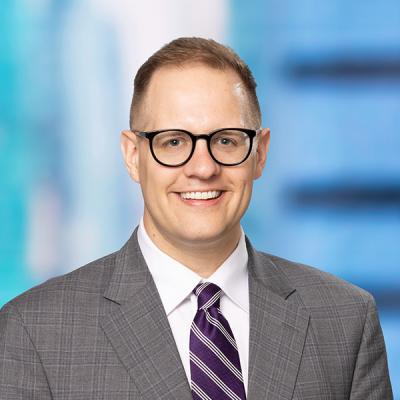NY HERO Act Plans ACTIVATED – Employer Action Required
Note: This post was updated on September 27, 2021 to incorporate updated guidance from the New York State Department of Labor regarding rules around face coverings for fully vaccinated worksites – at those worksites, face coverings are now “recommended” but not “required”).
The New York State Commissioner of Health has designated COVID-19 as a “highly contagious communicable disease that presents a serious risk of harm to the public health.” This means that the HERO Act’s many requirements are no longer theoretical: Almost all private New York employers must now activate their HERO Act-compliant workplace exposure prevention plans and take numerous implementation steps required by the recently enacted law. Per the Commissioner’s designation notice, the “activation” designation will remain in effect until at least September 30, 2021, at which point the Commissioner will review the level of transmission of COVID-19 in New York State and determine whether to continue this designation.
We previously reported on employer obligations under the HERO Act, including adopting an airborne disease exposure prevention plan and distributing that plan to workers. Employers’ prevention plans for New York worksites must be at least as comprehensive as the model plans provided by the New York State Department of Labor (NYSDOL), which published template plans on its website in July. Aside from the general template, the NYSDOL also provided template plans for 11 industries on its website: agriculture, construction, delivery services, domestic services, emergency response, food services, manufacturing and industry, personal services, private education, private transportation, and retail. The NYSDOL has clarified that telework sites are not “worksites” and do not require prevention plans.
The deadline for employers to adopt a prevention plan was August 5th, and the deadline to distribute such plans was September 4th. New York employers that have not yet adopted and distributed a prevention plan should do so quickly to avoid potential enforcement actions and penalties. Per new NYSDOL FAQ guidance, employers may be subject to daily penalties of $50 and violations ranging up to $10,000 for failure to abide by the requirements of the plan. These penalties are in addition to potential complaints that can be brought by employees against employers that fail to abide by the tenets of their prevention plans or retaliate against employees for raising workplace safety issues.
Major Workplace Restrictions Required Again
In light of the HERO Act’s activation, and based on the requirements in the model NYSDOL templates, New York employers will need to swiftly reinstitute a number of workplace virus prevention measures similar to those that were required under the New York Forward guidance from May 2020 through June 2021. These minimum measures include, but are not limited to:
- Daily health screenings of employees
- “Stay at home” policies for positive employees or those with symptoms
- Physical distancing where feasible
- Wearing face coverings throughout the workday to the greatest extent possible (however, note that NYSDOL updated its prevention plan template to confirm that where all individuals at a worksite are fully vaccinated, appropriate face coverings are “recommended, but not required, consistent with State Department of Health and the Centers for Disease Control and Prevention applicable guidance.” - NYSDOL still requires face coverings at worksites without a completely vaccinated population)
- Applicable engineering controls, such as ensuring effective ventilation
- Applicable administrative controls, such as employee training, limiting the sharing of workstations, and capacity constraints
- The use of personal protective equipment (where applicable)
- Cleaning and disinfection practices
Immediate Steps for New York Employers
As part of their newly minted exposure prevention plans, New York employers should have designated individuals or departments responsible for ensuring compliance with HERO Act safety obligations in the event of activation. Those designated individuals, along with other key decisionmakers, should now work to implement the worksite exposure prevention plans and should quickly take the following steps:
Review Plan: Employers must immediately review the worksite’s exposure prevention plan and update the plan, if necessary, to ensure that it incorporates current information, guidance, and mandatory requirements issued by federal, state, or local governments related to the infectious agent of concern.
Activate Plan: Employers must finalize and promptly activate the worksite exposure prevention plan. This includes reviewing virus prevention protocols and ensuring that the employer is engaged in the above-referenced virus mitigation measures (e.g., daily health screenings, face coverings, physical distancing, cleaning and disinfection)
Provide Verbal Training and Review: Employers must provide a verbal training of the employer’s prevention plan and employee rights under the HERO Act. Personnel must be trained on the following topics:
- COVID-19 and the disease(s) it can cause;
- the signs and symptoms of COVID-19;
- how COVID-19 can spread;
- an explanation of the employer’s prevention plan;
- the activities and locations at the employer’s worksite that may involve exposure to COVID-19;
- the use and limitations of exposure controls; and
- a review of the NY Standard released by the NYSDOL, including employee rights provided under the HERO Act.
The verbal training can be conducted electronically. Employers are not responsible for providing training to individuals working for staffing agencies, contractors and subcontractors, or individuals delivering goods or transporting people to or from the worksite.
Ensure Distribution and Posting of Plans: Employers must provide each employee (including any interns or on-site contractors) with a copy of the exposure prevention plan in English or in the language identified as the primary language of such employees, if available (NYSDOL has only made Spanish language plans available to date). If the employer has not already done so, post the prevention plan at the worksite and otherwise make it accessible to employees.
We will continue to review NYSDOL guidance and model documents as the HERO Act’s activation becomes a reality.
The timeline to come into compliance with the HERO Act is short, and Mintz’s Employment, Labor & Benefits team is available to assist employer with any HERO Act questions and concerns.



